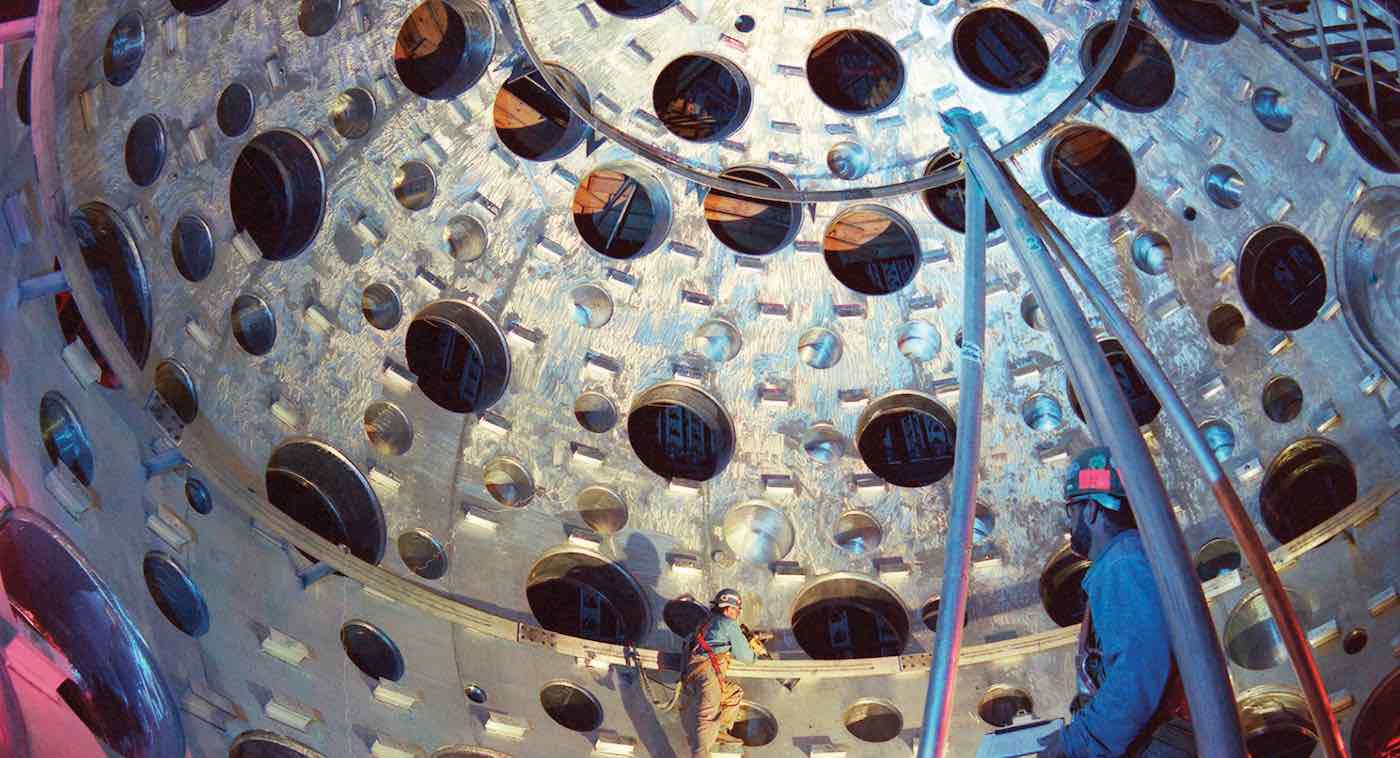Mysterious Object Unlike Anything Astronomers Have Seen Before Discovered
The ICRAR team mapping radio waves in the Universe has discovered something unusual that releases a giant burst of energy three times an hour.

For more than 60 years, scientists have sought to understand and control the process of fusion, a quest to harness vast amounts of energy released by the type of reactions that power the sun and stars.
New experiments in the U.S. have now achieved a burning plasma state, helping steer fusion research closer than it has ever been to its ultimate goal: a controlled reaction of self-sustaining power.
Los Alamos National Laboratory researchers, including members of the Physics division, contributed essential capabilities in diagnostic science to achieve and analyze the unprecedented results.
The diagnostic advances helped to transition fusion research to the threshold of ignition—the point at which a fusion reaction generates more energy than it receives and can burn on its own.
"These experiments indicate a transition to a different physics regime," said physicist Hermann Geppert-Kleinrath, a member of the team at the National Ignition Facility working on the burning plasma project.
"The research described in this paper marks where alpha heating in the reactions outcompeted the loss between radiation and heat conduction. It's an exciting time because we're at the point where continued marginal gains in how we conduct our experiments will lead to exponential improvements."
Watch the Reuters video below, or read more at the bottom…
The laser inertial confinement fusion experiments took place at the National Ignition Facility at Lawrence Livermore National Laboratory in California. Within a specially constructed cavity, a carbon-formed capsule, about one millimeter in diameter, contains both cryogenically frozen deuterium-tritium and the same as gas mixture — the fuel. When the cavity is heated with lasers, an x-ray bath results and warms the capsule until the fuel inside is compressed.
The paper published this week in the journal Nature describes the fusion of deuterium and tritium nuclei releasing neutrons and alpha particles; the latter deposit their energy back into the hotspot of the reaction and in so doing contribute to the propagation of the burn. Such an alpha-dominated reaction is sought after as a key element in self-sustaining fusion.
The forces at work in fusion are extreme. In the experiments described in the Nature paper, the temperature during the fusion reaction is about three times hotter than the center of the sun. The length of the reaction is incredibly short—approximately 130 picoseconds, the time it takes light to travel just four centimeters (at 300,000 km per second).
"It's an unbelievably tough physics regime to do measurements on," said Geppert-Kleinrath. "We're essentially creating a miniature sun in the laboratory."
To capture meaningful data, Hermann's team was responsible for the gamma reaction history diagnostic, providing bang time (the time of maximum compression and reaction rate—also called stagnation) and burn duration. The gamma reaction history instrument measures reactions with time resolution down to ten picoseconds—a tiny timescale on which light only travels millimeters.
Physicist Verena Geppert-Kleinrath, who is married to Hermann, is the team leader for advanced imaging at Los Alamos, and led the neutron imaging capabilities that provided three-dimensional hot spot shapes for the National Ignition Facility experiments. Neutron imaging meant measuring a 70-micron hotspot—equal to the thickness of a human hair—from 30 meters away through an extended aperture with openings only a few microns wide.
"We're very proud that coming from different fields and different groups within physics we have the privilege of being part of this very momentous achievement together," said Verena Geppert-Kleinrath. "Los Alamos' physics teams have been able to provide unique diagnostics to show the markers that we are looking for under challenging conditions."
Ultimately, the experiments explored the criteria for ignition — how fusion can be generated, and how it can be generated in such a way that it propagates itself, releasing more energy from the fuel than the energy it took to start the reaction courtesy of the lasers. The experiments and the analysis of the results suggested gradual improvements that could keep more energy inside the reaction instead of being lost to radioactivity or heat conduction. For instance, the fuel fill tube's size was identified as a performance limitation through 3D neutron imaging, and future experiments used a specially engineered fill tube that was much smaller.
The four experiments or "shots" represented significant accomplishments in achieving burning plasma. The fourth shot saw more energy created than was lost due to radiation or heat conduction and likely may have achieved propagation had the capsule not disassembled in the implosion. The total energy output, including the laser energy to start the reaction, was still a net negative, but the clear improvement represented a tipping point toward self-sustaining fusion.
The gradual improvements paid off significantly in August 2021, when an experiment at the National Ignition Facility achieved a yield of 1.3 megajoules — an eight-fold increase over the experiments described in the Nature publication. While falling just short of one definition of ignition, the experiment suggests that fusion research has entered a new era, with further gradual improvements perhaps able to achieve ignition and self-sustaining fusion.
"We're right at the cliff of experiments fizzling out versus experiments going into the ignition regime," said Hermann Geppert-Kleinrath. "Once you transition into this regime where alpha heating is dominating, marginal gains in how we do the experiment lead to very large gains in yield."
Funded by the U.S. Department of Energy, the National Ignition Facility experiments are testing these challenges that cannot be realized or addressed in any other way.
Shine Some Light—and Free Energy: Share on Social Media…
Be the first to comment